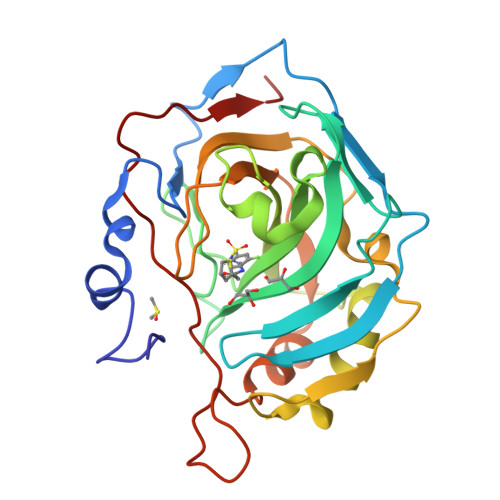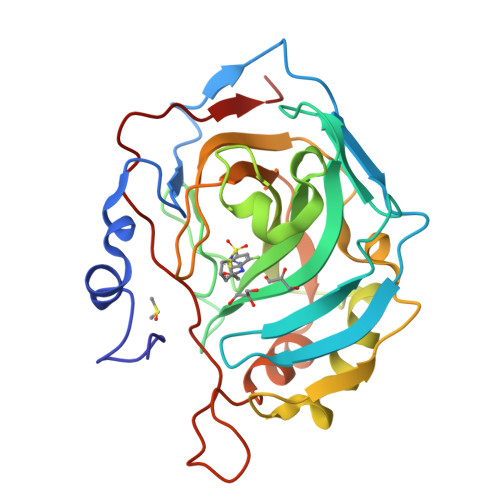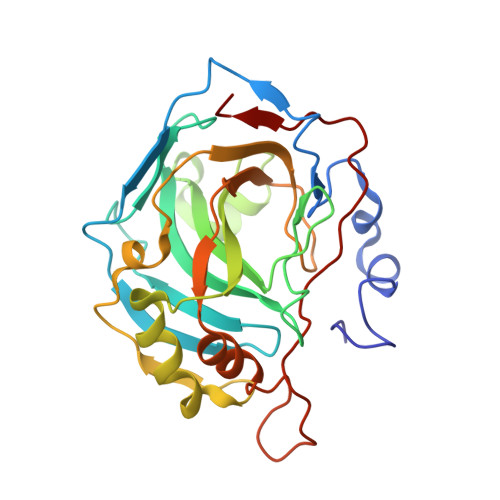Conformational variability of different sulfonamide inhibitors with thienyl-acetamido moieties attributes to differential binding in the active site of cytosolic human carbonic anhydrase isoforms.
Biswas, S., Aggarwal, M., Guzel, O., Scozzafava, A., McKenna, R., Supuran, C.T.(2011) Bioorg Med Chem 19: 3732-3738
- PubMed: 21620713
- DOI: https://doi.org/10.1016/j.bmc.2011.05.006
- Primary Citation of Related Structures:
3R16, 3R17 - PubMed Abstract:
The X-ray crystal structures of the adducts of human carbonic anhydrase (hCA, EC 4.2.1.1) II complexed with two aromatic sulfonamides incorporating 2-thienylacetamido moieties are reported here. Although, the two inhibitors only differ by the presence of an additional 3-fluoro substituent on the 4-amino-benzenesulfonamide scaffold, their inhibition profiles against the cytosolic isoforms hCA I, II, III, VII and XIII are quite different. These differences were rationalized based on the obtained X-ray crystal structures, and their comparison with other sulfonamide CA inhibitors with clinical applications, such as acetazolamide, methazolamide and dichlorophenamide. The conformations of the 2-thienylacetamido tails in the hCA II adducts of the two sulfonamides were highly different, although the benzenesulfonamide parts were superimposable. Specific interactions between structurally different inhibitors and amino acid residues present only in some considered isoforms have thus been evidenced. These findings can explain the high affinity of the 2-thienylacetamido benzenesulfonamides for some pharmacologically relevant CAs (i.e., isoforms II and VII) being also useful to design high affinity, more selective sulfonamide inhibitors of various CAs.
Organizational Affiliation:
Department of Biochemistry and Molecular Biology, College of Medicine, University of Florida, Box 100245, Gainesville, FL 32610, USA.




















